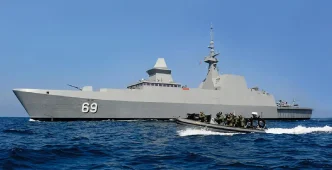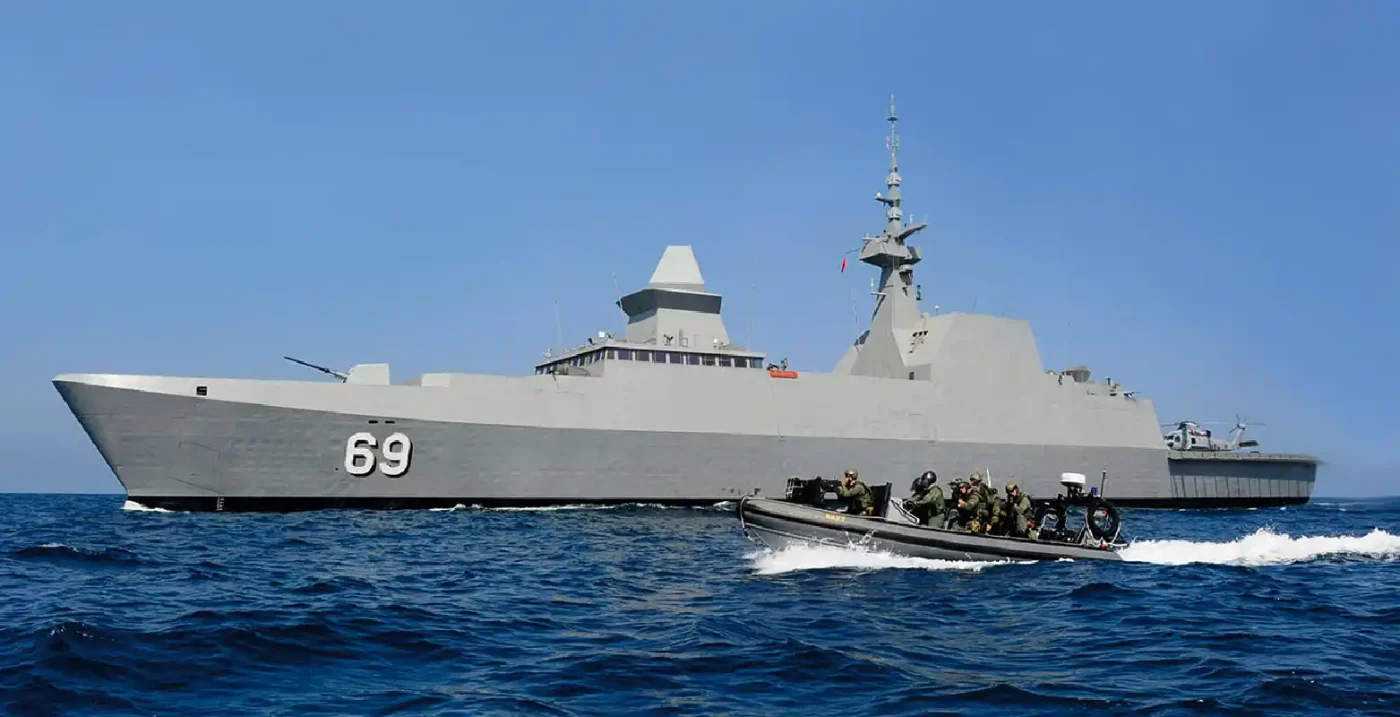The Republic of Singapore Navy (RSN) is set to bolster its maritime defense capabilities with the introduction of a new fleet of unmanned systems designed to detect and neutralize underwater mines. Scheduled for progressive delivery from 2027, these advanced technologies mark a significant step in modernizing Singapore’s naval operations, safeguarding its critical sea lanes in one of the world’s busiest maritime corridors.
A New Era of Naval Defense
The Ministry of Defence (Mindef) has awarded contracts to local technology and engineering giant ST Engineering to develop and supply a suite of mine countermeasure (MCM) unmanned systems. This includes unmanned surface vessels (USVs), autonomous underwater vehicles (AUVs), and a robust command and control (C2) infrastructure. These systems are designed to work in tandem, replacing the aging Bedok-class MCM vessels, which have been in service since 1995 and will remain operational during the transition period.
The primary aim of these unmanned systems is to enhance the RSN’s ability to address naval mines—a persistent threat to both military and commercial shipping—while minimizing risks to personnel. Equipped with advanced sensors and secure communication networks, the USVs and AUVs will transmit real-time data to a C2 center, allowing operators to monitor and manage missions remotely from shore or a mothership. This shift to remote operations underscores a broader trend among global navies to leverage technology for safer and more efficient mine-clearing operations.
Technological Innovations at the Forefront
Among the standout features of the new MCM USVs is their autonomous navigation system, which incorporates a locally developed collision detection and avoidance algorithm. This technology is particularly crucial given the heavy traffic in the Singapore Strait, a vital chokepoint for global trade. The USVs will also carry towed synthetic aperture sonars for mine detection and remotely controlled systems for mine neutralization, ensuring precision and safety in high-risk operations.
ST Engineering, the firm behind these innovations, will additionally provide a highly realistic simulation system for training purposes. This system will allow navy personnel to practice decision-making and execute a variety of MCM scenarios in a controlled environment, honing their skills without exposure to real-world dangers. According to Mr. Low Jin Phang, president of digital systems at ST Engineering, the company is pushing the boundaries of unmanned systems by integrating artificial intelligence to enable real-time data analysis for faster and more informed operational decisions. “We aim to redefine MCM operations with cutting-edge technology” said Mr. Low, highlighting the firm’s commitment to advancing naval capabilities.
Building on Past Successes
This latest development builds on ST Engineering’s prior success with the maritime security (Marsec) USVs, which have been patrolling Singapore’s waters since January 2025. These vessels complement manned ships, such as the littoral mission vessels, providing the RSN with greater operational flexibility. Three Marsec USVs are currently in service, with a fourth expected to join the fleet later this year. The experience gained from deploying these systems has informed the design and functionality of the new MCM fleet, ensuring they meet the unique challenges of Singapore’s maritime environment.
In 2021, the RSN also achieved a reported world-first by demonstrating that USVs could successfully identify and neutralize an underwater threat remotely. This validation of unmanned technology’s potential has paved the way for the comprehensive rollout planned for 2027, positioning Singapore as a leader in adopting autonomous systems for naval defense.
The Strategic Importance of Mine Countermeasures
Underwater mines pose a significant challenge to maritime nations like Singapore, where sea lanes are not only critical to national security but also to the global economy. Mines are relatively inexpensive and easy to deploy, yet they can cause substantial disruption to both military operations and commercial shipping. The threat has evolved in recent years to include improvised explosive devices that could be used by non-state actors, such as terrorist groups, to target vulnerable waterways.
Singapore’s strategic location at the crossroads of major shipping routes amplifies the importance of maintaining clear and secure waters. The Singapore Strait, through which a significant portion of the world’s trade passes, is particularly susceptible to such threats. The introduction of unmanned MCM systems is thus a proactive measure to address both conventional and emerging maritime security challenges, ensuring that the city-state remains a safe hub for international commerce.
Globally, other navies have also recognized the value of unmanned systems in countering mine threats. The US Navy, for instance, operates the Knifefish unmanned underwater vehicle, designed to detect and classify mines in both deep and shallow waters without endangering personnel. Singapore’s adoption of similar technology reflects a broader shift toward automation in naval operations, reducing human exposure to danger while improving the speed and accuracy of mine-clearing missions.
Modernizing a Legacy Fleet
The Bedok-class MCM vessels, commissioned nearly three decades ago, have served as the backbone of Singapore’s mine countermeasure capabilities. A midlife upgrade in 2014 enhanced their mine detection and disposal systems, extending their operational life. However, the increasing complexity of maritime threats and the rapid pace of technological advancement have necessitated a transition to more advanced, unmanned platforms. The phased introduction of the new systems from 2027 will ensure continuity in the RSN’s MCM operations while integrating state-of-the-art technology into its arsenal.
Mindef has emphasized that these new capabilities will significantly enhance the navy’s ability to respond to evolving maritime security threats. “Planned for progressive delivery from 2027 onwards, the acquisition of these systems underscores our commitment to safeguarding Singapore’s waters” said a spokesperson for the ministry. This forward-looking approach aligns with Singapore’s broader defense strategy, which prioritizes innovation and adaptability in an increasingly complex geopolitical landscape.
Regional and Global Implications
The deployment of unmanned MCM systems by the RSN could have broader implications for regional maritime security. Southeast Asia, with its numerous straits and waterways, faces a range of challenges, from piracy to territorial disputes. Singapore’s investment in advanced naval technology may set a precedent for other nations in the region to modernize their own fleets, potentially fostering greater collaboration on shared security concerns. Joint exercises or information-sharing initiatives involving unmanned systems could strengthen regional partnerships, particularly within frameworks like the Association of Southeast Asian Nations (ASEAN).
Moreover, Singapore’s focus on autonomous technology highlights the growing role of artificial intelligence and robotics in military applications. While these advancements offer clear benefits in terms of efficiency and safety, they also raise questions about the ethical and strategic implications of relying on unmanned systems. How will accountability be ensured in the event of operational failures or unintended consequences? As navies worldwide increasingly adopt such technologies, international norms and regulations governing their use will need to evolve to address these concerns.
Looking Ahead
As Singapore prepares to integrate these cutting-edge unmanned systems into its naval operations, the focus will be on ensuring seamless coordination between manned and autonomous platforms. The transition period leading up to 2027 will be critical for training personnel, refining operational protocols, and testing the systems under real-world conditions. If successful, this initiative could redefine how small but strategically significant nations like Singapore maintain security in contested maritime environments.
For now, the RSN’s move toward unmanned MCM capabilities signals a bold step into the future of naval warfare. As the technology matures and the fleet expands, questions remain about how these systems will shape the broader dynamics of maritime security in Southeast Asia and beyond.















